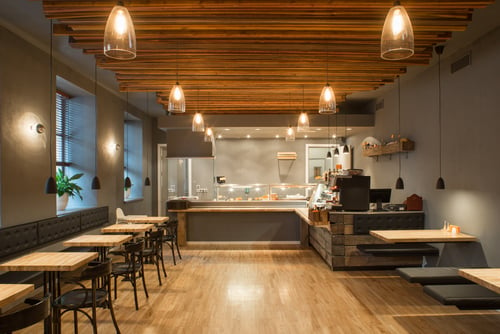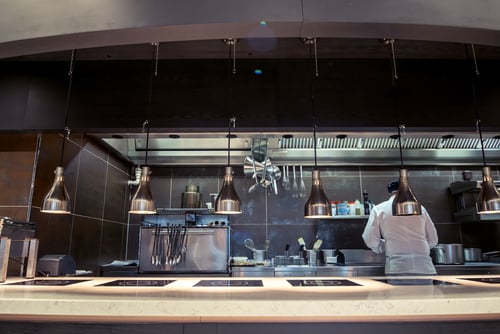
HoReCa and Design: the role of lighting identity
The layout of the interior and exterior of a restaurant plays an important role in the design of the restaurant, just as much as the cuisine. Lighting is one of the most important components of venue design and should therefore be carefully considered. Choosing the right lighting can positively influence the mood of customers, enhancing the experience of the food and determining the success of the venue.
After a period of forced closure due to the Covid-19 pandemic, the restaurant industry is making a safe new start by redefining the design concept of venues in order to attract new guests to be welcomed and entertained. What are the new trends in the HoReCa sector for the designer restaurant? Sustainability and minimalism, not only in the choice of furniture but also in restaurant lighting.
Are you a HoReCa professional looking for new solutions for hotels or public establishments? Click on the link below and download the infographics to discover the latest trends in application design in the restaurant and hospitality world.
Restaurant lighting: the different types of light
Designing a restaurant means shaping its identity. This is achieved by defining a lighting strategy that involves the skilful use of a variety of harmoniously matched light sources.

Three main types of restaurant lighting can be distinguished:
-
Ambient lighting: this is considered to be the main source of light in a place and is provided by lamps, recessed or suspended lights;
-
Functional lighting: this is the set of light sources intended to signal or illuminate specific details of the establishment, for example, the counter, the hob or an appliance in the kitchen;
-
Accent lighting: the set of light sources used to enhance certain details of the interior for decorative rather than functional purposes. For example, lighting designed for wine cellars, signs, table profiles, or professional equipment.
In design restaurants, one of the emerging trends is open kitchens surrounded by windows. At the heart of the restaurant business, the kitchen is becoming an important element of the restaurant's architecture and requires a rethink in its design. Customers want to see how dishes are prepared and with what technological tools they are made. As a result, the equipment used by chefs must not only be functional but also aesthetically appealing.
Lighting also plays a key role here, it can help to add value to the applications on display.

Restaurant lighting: the latest trends
In line with the latest trends in sustainability and minimalism, accent lighting solutions are designed to fit into an essential space, taking into account a simple, refined and energy-saving design. With this in mind, LED is confirmed as the most advantageous light source due to its high efficiency, colour availability (RGBW LED) and low energy consumption. LEDs, mounted on printed circuit boards, can be used for profiles or for customised backlit panels.
In the field of restaurant lighting, light and minimalist light profiles emerge as lighting solutions that can decorate walls, furniture and applications.
The light sources used in this case are high-efficiency invisible lighting devices, usually small luminous bodies with neutral colours, which are integrated inside the application housings, capable of perfectly illuminating the desired area or simply highlighting the shapes of objects.
SLIM's wide range includes customised solutions for the backlighting of professional catering equipment. If you are looking for a specific lighting component to add value to the design of restaurant end-use applications, click on the link and evaluate our partnership.
Are you interested in custom solutions proposed by SLIM? Click on the button below to discover the successful projects that have led to the creation of customised lighting components!

